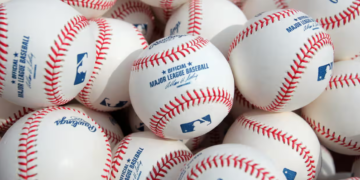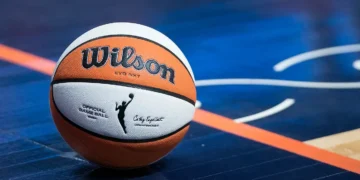David Justice Discusses the Decline of Black Players in MLB. Img source: Youtube.com@All Facts No Brakes
June 06, 2024 Story by: Editor
In the realm of sports media, particularly on platforms like ESPN, there is a significant discussion that remains largely neglected: the decline of Black players in Major League Baseball (MLB). This issue demands more attention, especially given the context of other thriving player markets. MLB Commissioner Rob Manfred and his associates appear to be indifferent to this decline, as the league continues to invest in the flourishing Latin and expanding Asian player markets. However, the diminishing presence of Black players in baseball reveals deeper systemic issues that need urgent addressing.
One of the primary factors contributing to this decline is the accessibility of sports in urban communities. Football and basketball have a much lower barrier to entry compared to baseball. It’s relatively easy to gather a group of kids for a game of basketball or football in the neighborhood, where hoops and fields are more readily available. In contrast, baseball requires more equipment, space, and organization, making it less accessible in many urban areas. This disparity means that fewer Black children are exposed to and grow up playing baseball, leading to a smaller pool of talent entering the sport at higher levels.
Furthermore, former Black MLB players have not been as visible in promoting and marketing the game to the younger Black generation. Icons like Jackie Robinson and Hank Aaron once inspired countless young Black athletes to pursue baseball, but there seems to be a gap in contemporary role models actively engaging with the community. This lack of representation and inspiration can deter young Black athletes from considering baseball as a viable path.
Another critical issue is the scarcity of Little League teams in predominantly Black neighborhoods. Little League baseball serves as a foundational entry point for many young players, providing them with the skills and passion needed to pursue the sport further. However, in many urban areas, these teams are rarely seen or heard of, depriving potential young talents of the opportunity to engage with baseball from an early age.
To reverse this trend, MLB must take proactive steps. This includes investing in urban baseball programs, ensuring that equipment and facilities are accessible in underserved communities, and creating initiatives that specifically target Black youth. Programs like the RBI (Reviving Baseball in Inner Cities) initiative are a step in the right direction, but more needs to be done to ensure widespread impact.
Additionally, former and current Black MLB players must be encouraged to take on mentorship and ambassador roles, actively engaging with young athletes and promoting the game in their communities. This visibility can inspire a new generation of Black players to pursue baseball, showing them that success in the sport is achievable.
Moreover, media platforms and sports networks need to amplify this conversation. By shedding light on the systemic barriers and highlighting success stories within the Black baseball community, they can play a crucial role in shifting the narrative and encouraging broader participation.
In conclusion, the decline of Black players in MLB is a multifaceted issue that requires immediate and sustained action. By addressing accessibility, representation, and visibility, MLB and its stakeholders can work towards creating a more inclusive and diverse future for the sport. It’s a conversation that must be prioritized, not only for the health of the game but for the opportunities it can provide to young Black athletes across the country. Source: The Disgruntled Mets FanANBUZZ
















